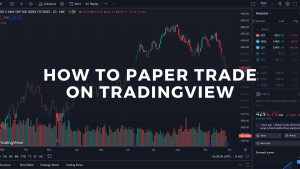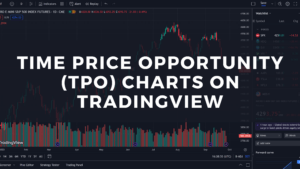This article is the opinion of Optimus Futures, LLC.
The ability to read divergence is a sought-after skill for most technical traders. And it is fair to assume that many already know how to pull up a traditional oscillator indicator like an RSI or a MACD to compare the highs and lows printed on these indicators versus the swings printed on the price charts.
Few, however, know that divergence can, in fact, be spotted on your charts directly as well. Well, maybe not traditional divergence as we know it, but divergence as we theoretically define it. We label divergence as a sign of momentum exhaustion as indicated by price making, for example, higher highs as you would expect in an uptrend, but with lower tick volume that reflects as lower highs in your oscillator indicator. In effect – divergence is really just a measure of weakening momentum that could possibly denote an impending top or bottom in the market.
Not many traders are aware that studying candlestick formations alone can give you concrete evidence of slowing momentum. As we progress through this article, you will see exactly what this means.
Implicit Divergence – an Introduction
Implicit divergence is a term we coined to describe the implicit indications of momentum exhaustion ingrained in price action alone, requiring absolutely no need for any traditional lagging oscillator indicators.
At the heart of it, Bearish implicit divergence presents itself when price fails to close above immediately prior candlestick highs. Bullish implicit divergence is the converse case where price fails to close below immediately prior bar lows.
If you read and re-read the text written in bold above, you might be able to connect some dots already. If price movement is backed by strong momentum, it should consistently be able to clear prior price action and close strongly in the direction of the trend. If however, the price is struggling to close above prior bar highs (or lows for a bearish case) it can potentially be concluded that price could be losing momentum – or as we put it, we may just be seeing implicit divergence.
Note however that we italicized the word “potentially” above. This is to highlight the fact that we do not necessarily have a case of implicit divergence every time you see price fail to close strongly beyond the prior candlestick high or low. As you might imagine, price failing to sometimes close past prior candlestick range is a fairly common occurrence, especially when the market runs sideways and lacks definitive direction.
Authentic implicit divergence – just like traditional divergence – requires for the phenomena to repeat consistently, candlestick after candlestick, to make a strong case for potential momentum exhaustion.
Just as with traditional divergence you would like to see multiple higher highs printed by price match with multiple lower highs printed by the RSI, similarly we want multiple candlesticks stacked next to each other – each failing to close past the prior candlestick’s low or high – to make for a strong case of implicit divergence.
Real-time Examples
Looking at recent real-time examples on the futures markets should help clear the concept some more. Note that implicit divergence is a price action principle and works across all markets and trading instruments, including the futures markets.
Past performance is not indicative of future results.
The chart above shows the price action on the 10-year treasury notes futures market (December delivery contract) from November 14.
Do you see how every candle printed after the one that was circled could not close below the prior candle’s low? That is textbook bullish implicit divergence at play. If you take a closer look, we had a similar case at the swing low prior the one we studied.
Past performance is not indicative of future results.
That swing low was a minor one as it represents only a small pullback into the downtrend, but if you know how to read implicit divergence, you might have seen that pullback coming as well. Again, we had candles failing to close below the prior candles implying that price was losing steam, albeit for short period.
Notice also that after the circled candle we do still have bearish candles per se, I,e the candles are still red in color denoting that that they closed below their open. If dragged on for a while longer, it could still have given you the illusion that the downtrend is in fact, as price continues to trickle down and we would have had red (or bearish candles) print in succession, but it’s really the close in perspective to the prior candle that tells you the story.
We scrolled the chart a little further back to early September to find a relevant example to demonstrate what we said above.
Past performance is not indicative of future results.
Study the price action after the candle that has been marked with the black circle. We have FOUR green candles after that which effectively means that four candles after the one marked were able to close higher than the prior candles, possibly creating an illusion for some that the market is still bullish.
This illusion is similar to the one you can experience with traditional divergence where price still seems to be printing highs (or lows) consistent with the trend but is actually losing momentum as indicated by traditional indicators. Conversely, in the case of implicit divergence, you can have candlesticks closing bullish in an uptrend and bearish in a downtrend and still be implying implicit divergence if you consider they are close in relation to the prior candle.
In the example above, note that even though we have bullish candles being printed, we have bearish implicit divergence at play because the candles after the one marked actually fail to close above the candles just prior to them – well except the fourth which you can see only barely closed above. And that brings us to the next point.
Implicit Divergence is NOT a Hard Science
Bear in mind that while we are watching for candles to consistently fail to close beyond the range of the prior candle and that such a situation makes for a textbook case of implicit divergence – there can be certain occasions when implicit divergence is NOT perfect, but can still be a reliable indicator.
One example was the last one we showed above. Out of four candles that we took to be implying implicit divergence, the last one ‘technically’ closed above the prior candle, but it was still a weak close, and really just barely above the prior candle anyway. A slight discrepancy in an otherwise consistent implicit divergence pattern DOES NOT harm the reliability of the phenomena. The markets are really just a projection of our collective thinking and actions – and hence are not perfect either.
Implicit Divergence is NOT a Trading Signal Either
Just as we don’t see traditional divergence as a hard science or even a definitive trading signal, the same applies to implicit divergence as well. We have noticed implicit divergence working even more accurately than traditional divergence but we still caution against using it as a sole entry trigger for traders.
As is with most technical trading concepts, it is ideal to use them in congregation with each other rather than rely on any single element alone. As with traditional divergence where you can see an uptrend continue to post higher highs while the MACD shows lower highs for a while before the trend eventually pulls back or reverses, implicit divergence is also in the same ballpark. You can potentially see many candles add to implicit divergence itself before the eventual turnaround occurs. Again it would help to look at other elements of price action as well such as the existence of a long-term support and resistance level or a trend line close by to better time your trades.
There is a substantial risk of loss in futures trading. Past performance is not indicative of future results. Past performance is not indicative of future results.


















